Manila Kodali
Wav2vec-based Detection and Severity Level Classification of Dysarthria from Speech
Sep 25, 2023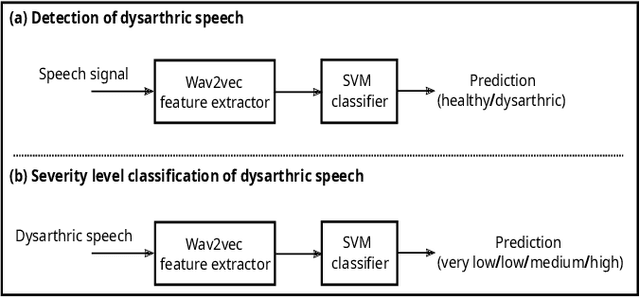
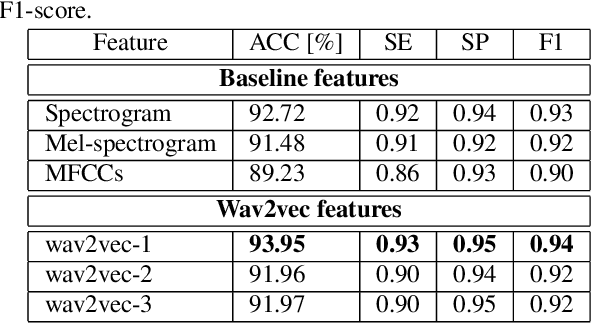
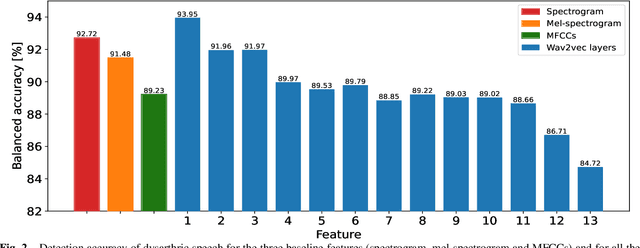

Abstract:Automatic detection and severity level classification of dysarthria directly from acoustic speech signals can be used as a tool in medical diagnosis. In this work, the pre-trained wav2vec 2.0 model is studied as a feature extractor to build detection and severity level classification systems for dysarthric speech. The experiments were carried out with the popularly used UA-speech database. In the detection experiments, the results revealed that the best performance was obtained using the embeddings from the first layer of the wav2vec model that yielded an absolute improvement of 1.23% in accuracy compared to the best performing baseline feature (spectrogram). In the studied severity level classification task, the results revealed that the embeddings from the final layer gave an absolute improvement of 10.62% in accuracy compared to the best baseline features (mel-frequency cepstral coefficients).
Severity Classification of Parkinson's Disease from Speech using Single Frequency Filtering-based Features
Aug 17, 2023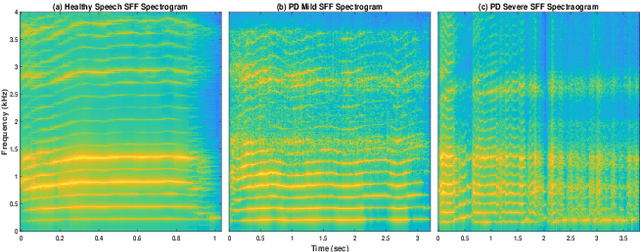
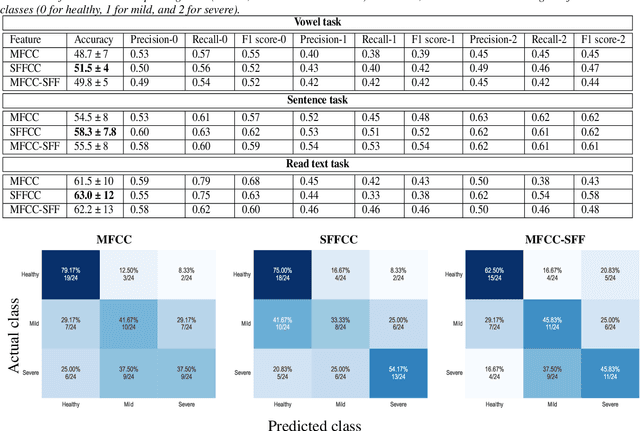
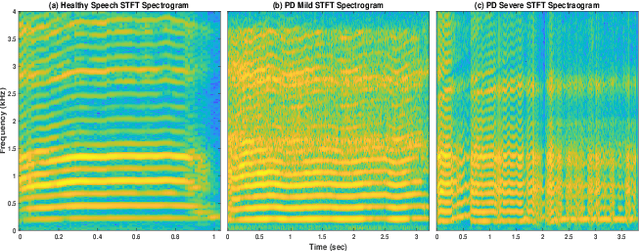
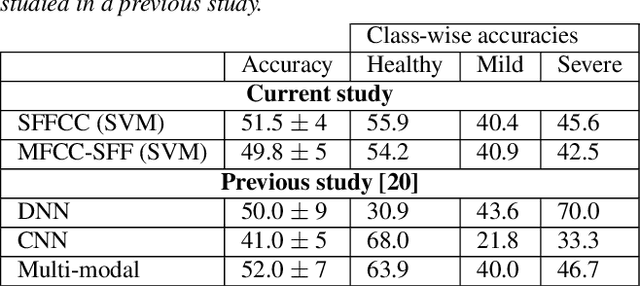
Abstract:Developing objective methods for assessing the severity of Parkinson's disease (PD) is crucial for improving the diagnosis and treatment. This study proposes two sets of novel features derived from the single frequency filtering (SFF) method: (1) SFF cepstral coefficients (SFFCC) and (2) MFCCs from the SFF (MFCC-SFF) for the severity classification of PD. Prior studies have demonstrated that SFF offers greater spectro-temporal resolution compared to the short-time Fourier transform. The study uses the PC-GITA database, which includes speech of PD patients and healthy controls produced in three speaking tasks (vowels, sentences, text reading). Experiments using the SVM classifier revealed that the proposed features outperformed the conventional MFCCs in all three speaking tasks. The proposed SFFCC and MFCC-SFF features gave a relative improvement of 5.8% and 2.3% for the vowel task, 7.0% & 1.8% for the sentence task, and 2.4% and 1.1% for the read text task, in comparison to MFCC features.
 Add to Chrome
Add to Chrome Add to Firefox
Add to Firefox Add to Edge
Add to Edge